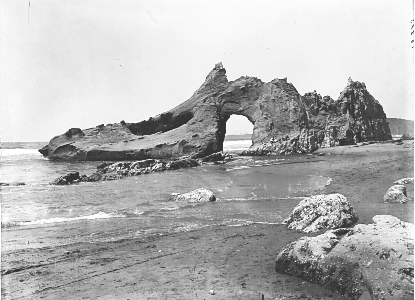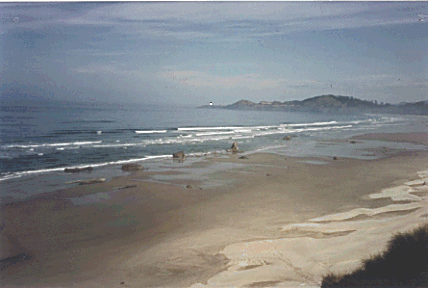Erosion of a Sea Stack Over 100 Years
The following photographs show the demise of Jump-Off Joe, a one-hundred-foot-high sandstone formation known as a “sea stack”. In 1890, the sea stack was composed of middle Miocene concretionary sandstone of the Astoria Formation. Yaquina Head on the Horizon is composed of middle Miocene basalt flows and breccia. Note remnant of Pleistocene terrace deposit along the wave cut bench on the stack. Jump-Off Joe was a well-known tourist attraction, but it weathered rapidly. Its arch collapsed in 1916, a few years after the last black-and-white photo, shown below, was taken. There is nothing left of Jump-Off Joe today.






